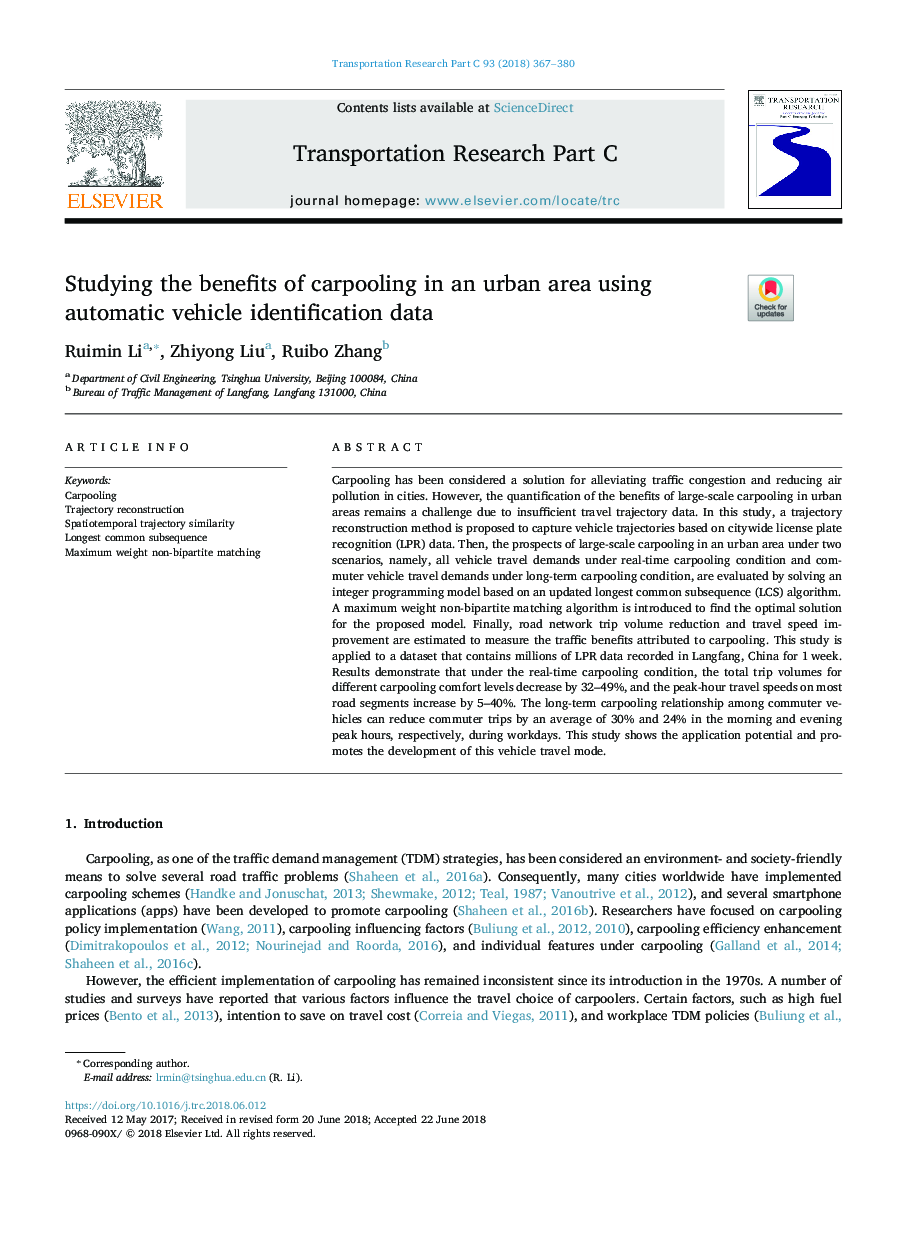| Article ID | Journal | Published Year | Pages | File Type |
|---|---|---|---|---|
| 6935774 | Transportation Research Part C: Emerging Technologies | 2018 | 14 Pages |
Abstract
Carpooling has been considered a solution for alleviating traffic congestion and reducing air pollution in cities. However, the quantification of the benefits of large-scale carpooling in urban areas remains a challenge due to insufficient travel trajectory data. In this study, a trajectory reconstruction method is proposed to capture vehicle trajectories based on citywide license plate recognition (LPR) data. Then, the prospects of large-scale carpooling in an urban area under two scenarios, namely, all vehicle travel demands under real-time carpooling condition and commuter vehicle travel demands under long-term carpooling condition, are evaluated by solving an integer programming model based on an updated longest common subsequence (LCS) algorithm. A maximum weight non-bipartite matching algorithm is introduced to find the optimal solution for the proposed model. Finally, road network trip volume reduction and travel speed improvement are estimated to measure the traffic benefits attributed to carpooling. This study is applied to a dataset that contains millions of LPR data recorded in Langfang, China for 1â¯week. Results demonstrate that under the real-time carpooling condition, the total trip volumes for different carpooling comfort levels decrease by 32-49%, and the peak-hour travel speeds on most road segments increase by 5-40%. The long-term carpooling relationship among commuter vehicles can reduce commuter trips by an average of 30% and 24% in the morning and evening peak hours, respectively, during workdays. This study shows the application potential and promotes the development of this vehicle travel mode.
Related Topics
Physical Sciences and Engineering
Computer Science
Computer Science Applications
Authors
Ruimin Li, Zhiyong Liu, Ruibo Zhang,
